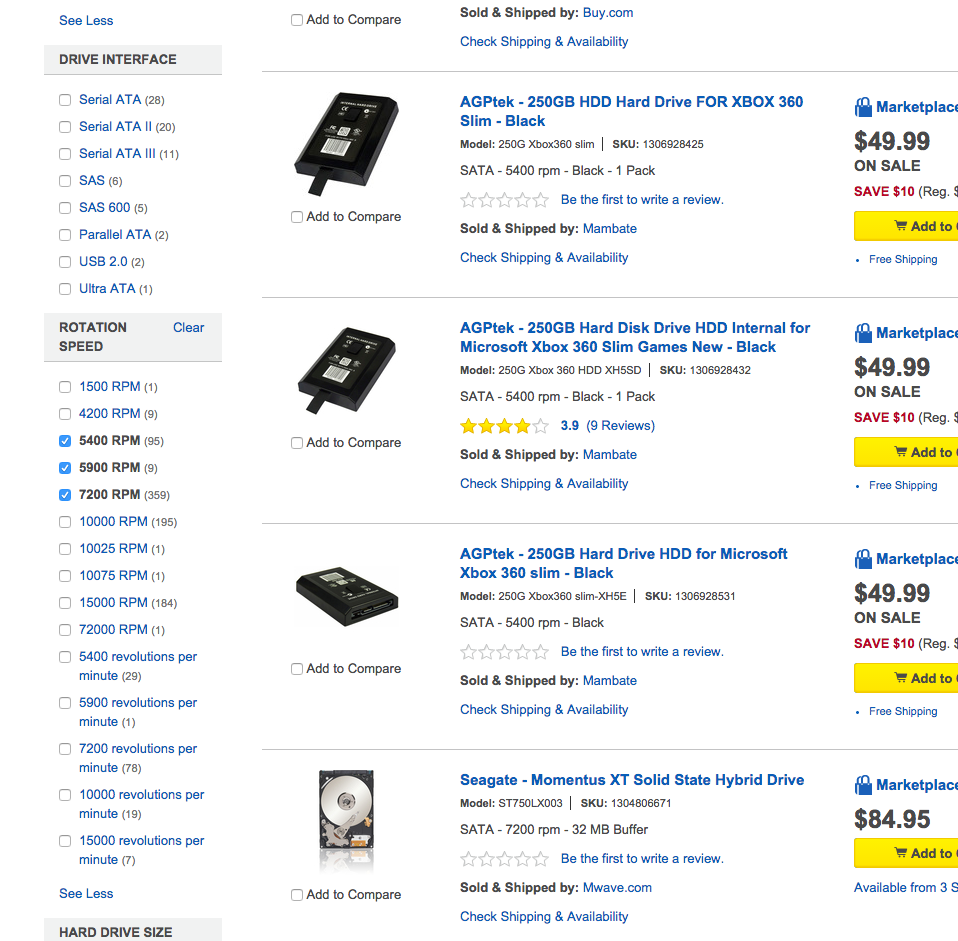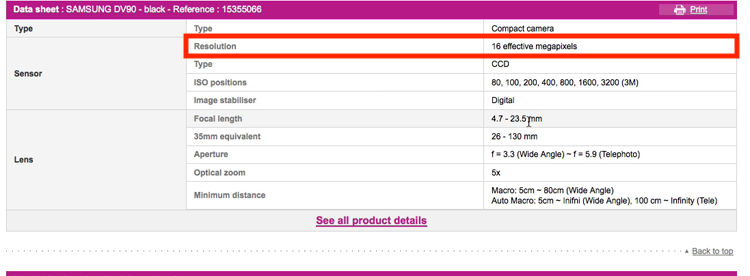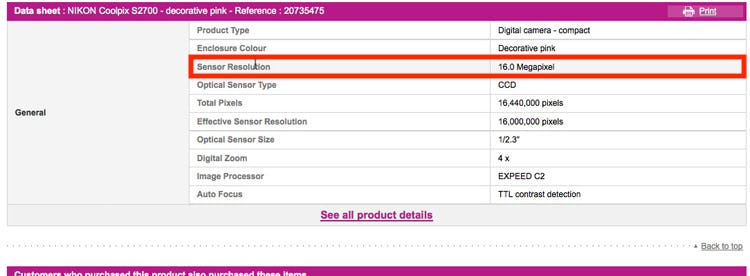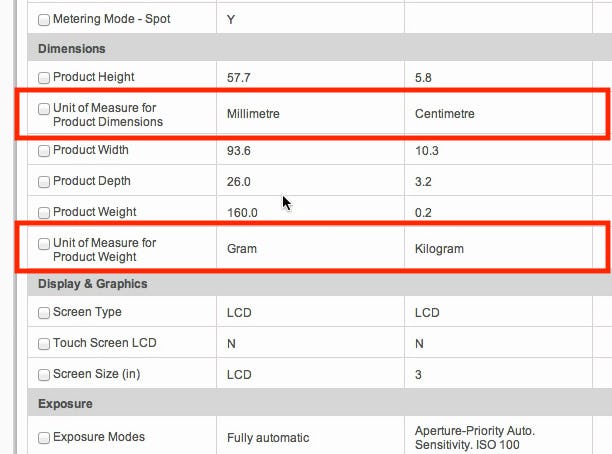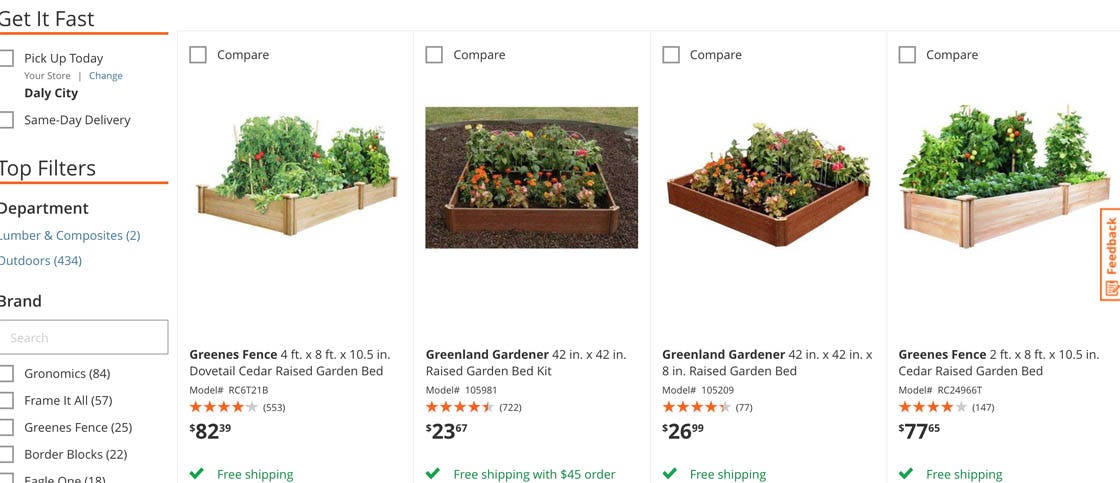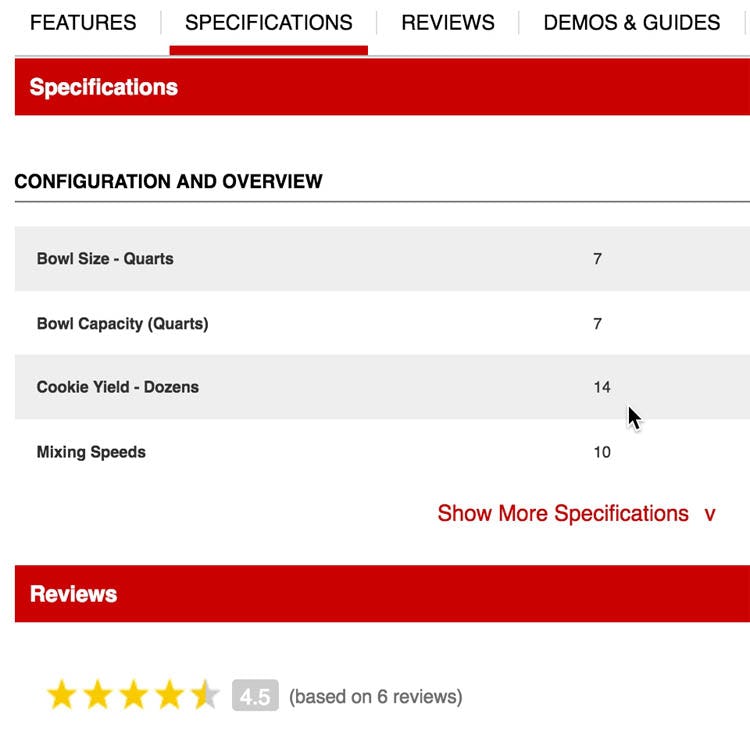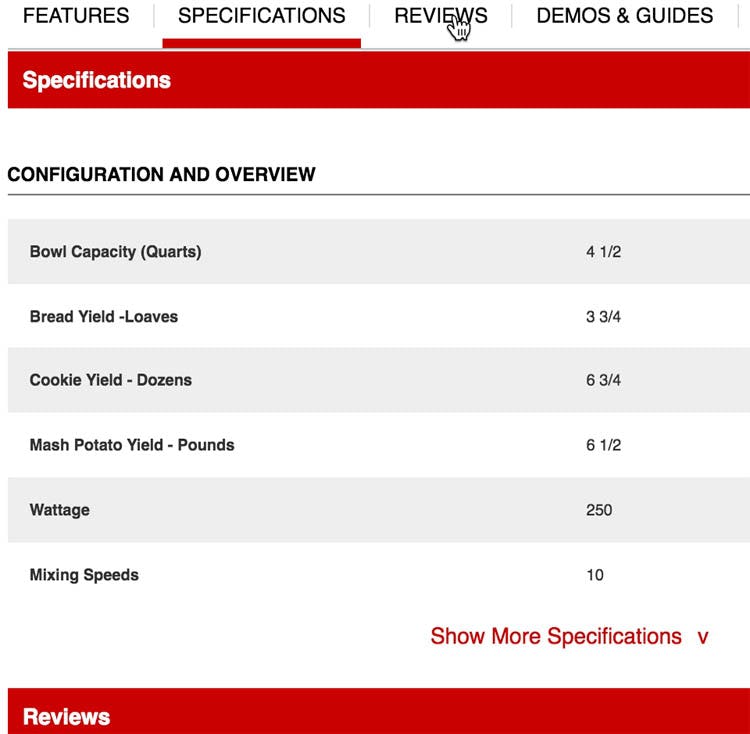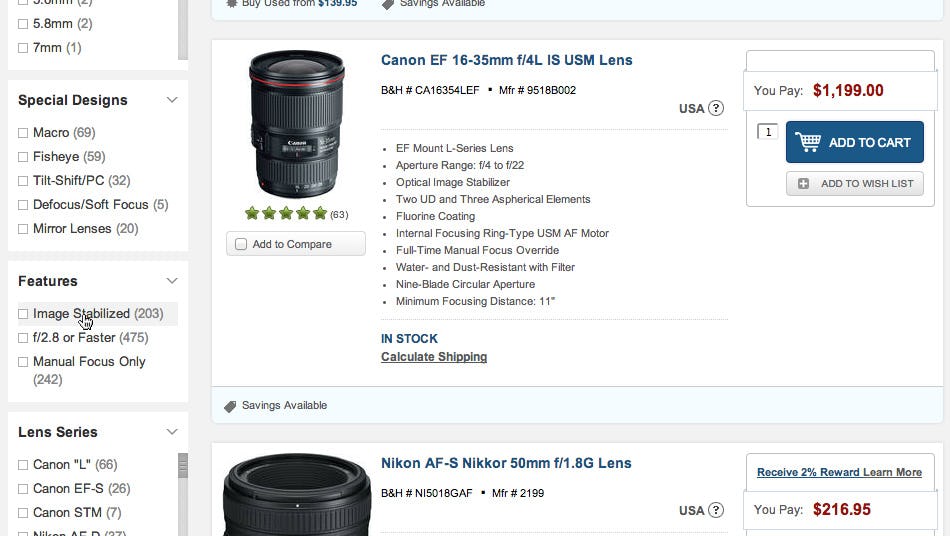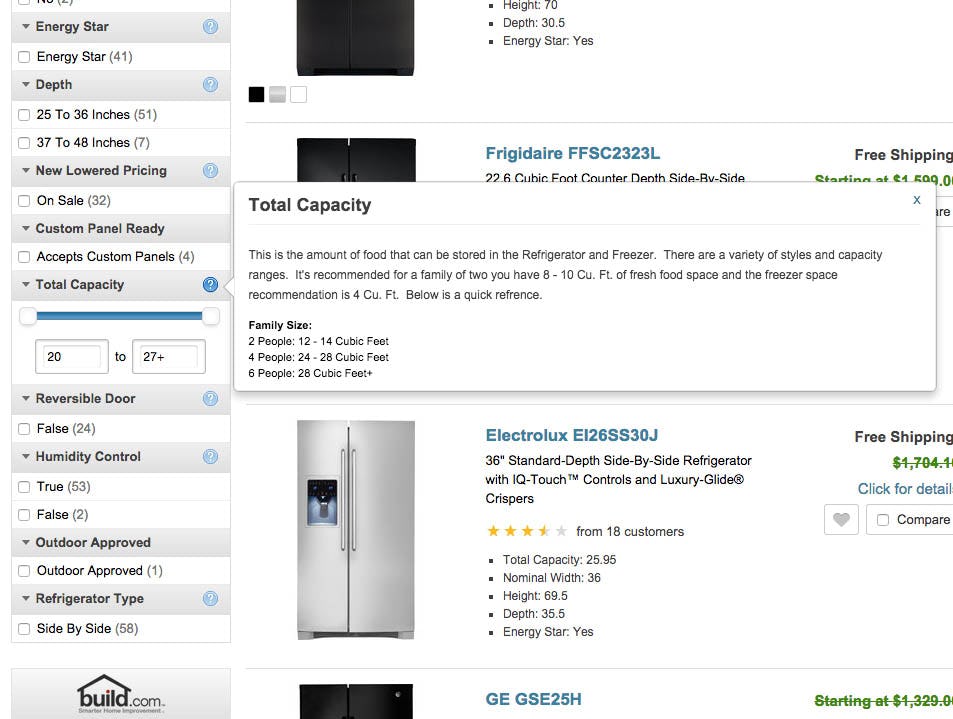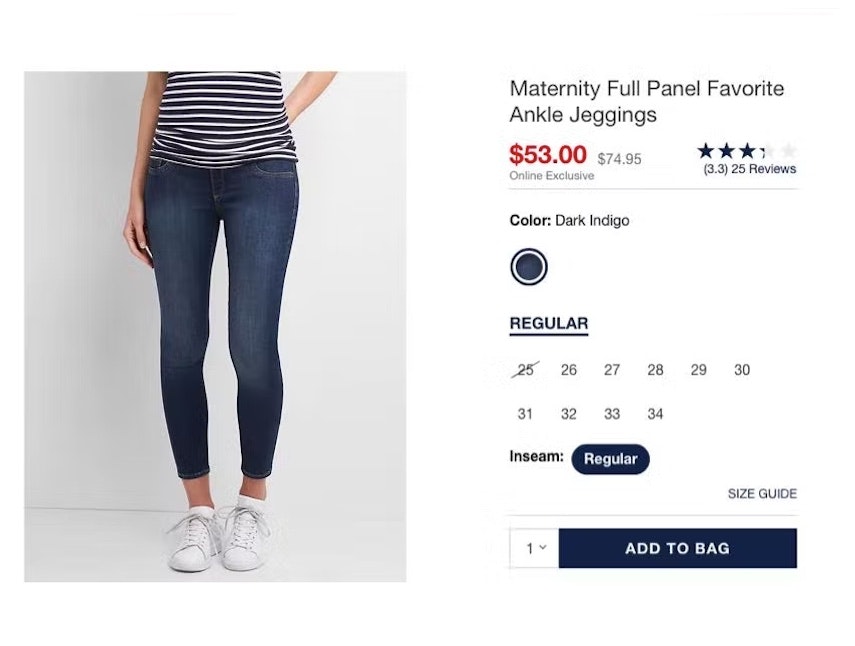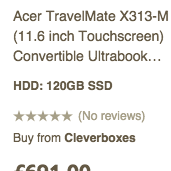Product specifications, whether they appear in a dedicated spec sheet, in a product list item, or as filters, are crucial to some users’ product-purchasing decision.
Both our large-scale Product Details Page and Product List & Filtering usability testing consistently shows that product specifications can be exceedingly difficult for users to navigate, especially when specifications for the same product type are presented inconsistently to users.
Yet our Product Page and Product Lists & Filtering benchmarks show that 52% of e-commerce sites fail to sufficiently post-process vendor-supplied data — making it very difficult for users to find and compare products in product lists and on product pages.
In this article, we’ll discuss the test findings from our Product Page and Product Lists & Filtering usability studies related to inconsistent presentation of product data, including:
- Why unprocessed product specifications are difficult for end users to use
- Pitfalls to avoid when presenting product specifications on the product page or in “Compare” features
- Why product filters also must be post-processed when using vendor-supplied data
Users’ Difficulty of Using Unprocessed Product Data
At Best Buy “Drive Interface” and “Rotation Speed” filter options aren’t post-processed, leaving users with a very inconsistent and redundant set of filters to choose among (e.g., “10000 RPM” vs. “10000 revolutions per minute”).
During our large-scale usability testing, we tested many sites that offered users detailed product specifications for certain product types. Indeed, testing showed that some users need to evaluate and compare multiple products in order to find the perfect one.
However, during testing, the subjects often weren’t able to do this because the specifications for the chosen products were presented inconsistently.
When users are comparing similar items on the same site, inconsistent availability and formatting of product data, as well as inconsistent units of measure, reflect poorly on a site’s professionalism and puts a burden on users, who then have to perform their own processing of the displayed data, often leading to guesstimations or going off-site to research further.
Sites offering products from different suppliers and brands are prone to data inconsistency issues, as different data vendors will inevitably use different labelling for the same product attributes, use different measurement units, or will simply provide different levels of product information.
For example, one brand may term their TV’s refresh rate system “TruMotion”, while another “Motionflow”; one supplier may provide the length of their area rug in feet, while another in meters, etc. The end result is that users confronted with wildly inconsistent product data, for the same type of product, will find it difficult if not impossible to effectively compare the items.
Presenting Product Specifications on the Product Page and in Compare Features
The product page, spec sheets, and compare features are where many users will attempt to compare products of the same product type. During testing, we observed 5 common product-data inconsistencies that hampered users’ ability to effectively compare products:
1) Misaligned Attributes. Another user during testing was comparing two different compact cameras, but had severe issues locating something a crucial as the resolution. Note the spec label is called “Resolution” for one camera (first image) but “Sensor Resolution” for the other (second image), making it difficult for users to compare the two specs. (Furthermore, note how one spec is listed as “16 effective megapixels” whereas the other lists “16.0 Megapixels”, causing ambiguity if “effective megapixels” is better.)
1) Misaligned Attributes. Very often, different vendors will not use the exact same labelling for the same product attributes. For example, one vendor calling a spec “Sensor Resolution” while another calls it “Resolution”. This makes it needlessly difficult for users to locate and recognize that the differently labeled specs are in fact for the same product attribute. In practice it can cause users to overlook the inconsistently labeled spec (e.g., as some users will scan for a label starting with “Resolution” instead of “Sensor”). For those users who overlook a spec due to label inconsistencies, it’s as severe as if the spec wasn’t there at all.
2) Units of Measure. “It’s a bit annoying…when they don’t use the same unit of measure.” At Tesco another user attempted to compare two cameras using a compare feature but ran into trouble when the specifications were listed in different measurements (e.g., grams and kilograms). Inconsistent product data limits the effectiveness of comparison features, as users can’t easily make direct 1-1 comparisons of product features.
2) Inconsistent Units of Measurement. When product specifications are listed in different units of measurement, they can be very difficult for users to compare. It’s not impossible, of course; users must just convert the values themselves. However, this assumes that all users will notice that the attributes are provided in different units of measurement (not all the test subjects during testing did). Additionally, it requires that all users, by memory, know the exact unit conversion, or know how (or have the ability to) to look it up. This can clearly be a source of errors as users themselves try to convert units.
While mixing up imperial and metric units happens from time to time, a more commonly observed issue is inconsistent usage of the “resolution” of the unit — e.g., listing the length of some products in feet and then listing others in inches.
3) Arbitrary Order for Dimensions. At Home Depot dimensions in the product title aren’t listed in the same order. For example, the first product lists width first, while the last lists length first. Users simply browsing the product list would have no way of knowing which measurement number applies to which measurement. (Furthermore note how the product measures are listed inconsistently in feet and inches).
3) Arbitrary Order for Dimensions. When multi-value attributes such as dimensions are listed in different sequences, users are very likely to misread them. For instance, one manufacturer may list its dimensions as “Height / Width / Depth” while another manufacturer lists their products as “Depth / Width / Height” — which makes it very likely users will misread the product attributes when comparing the two spec sheets.
In other instances the issue is even worse, as the manufacturers use different dimension labeling or different product orientations when measuring the product — hence what one may call “Length” another calls “Width”, while in fact both are referring to the same measure.
Therefore, e-commerce sites need to ensure all product dimensions are synchronized during import of vendor data, so that all attributes are displayed in the same order to users.
4) Abbreviations. Another user at Newegg had difficulty comparing four TVs, which wasn’t surprising, given the wildly inconsistent product data. For example, the “Refresh Rate” is listed three different ways for three different TVs, and missing altogether from one. This makes it extremely difficult for users to compare products of the same product type without extensive off-site research.
4) Abbreviations and Jargon. Abbreviated values and vendor-specific brand or feature names can be tricky for users to interpret, especially if they are used inconsistently in the spec sheet. For example, one product that uses abbreviations for certain product features while they are written out in full for other products of the same product type.
Additionally, if simply directly importing vendor data for the product-specification values, many product specs will include vendor-specific naming. For example, for TVs Sony has named their refresh rate system “Motionflow”, while Samsung calls it “Clear Motion Rate”, LG “TruMotion”, etc. Such attributes will often require an explanatory tooltip so that users don’t have to know or research themselves that, for example, a spec reading “120Hz TruMotion” is largely the same as one reading “120Hz Motionflow” when comparing two products. Or even better, post-processing during import of the vendor data to align the spec values, so it simply reads “120Hz” for both products, with potentially then another separate specification type reading “Refresh Rate System: [TrueMotion / MotionFlow]” .
5) Missing Product Data. One user tried to compare the power of two mixers on kitchenaid.com on two different product pages. However, one mixer did have wattage information (first image), while the other one lacked it (second image). Furthermore, note the missing product data (e.g., “Mash Potato Yield”, “Bread Yield”) for the mixer in the second image. The inconsistency of specifications affected 25% of the tested users at KitchenAid.
5) Missing Product Data. Some products may lack product information, which makes comparison across the missing attributes impossible. Of course, if the data are missing because the attributes don’t make sense for one of the products, then this is perfectly fine. However, often missing specifications are simply data that haven’t been submitted in a vendor’s dataset, rather than because the product doesn’t have those attributes (e.g., wattage specifications for mixers). This data will need to be “patched” using additional sources or manual verification.
Offering Product Specifications as Filters
Notice the 15 different battery-type filters at Northern Tool. Had the data been post-processed into the actual non-branded battery type names, users would have a much simpler choice of just 3 types: Lithium-Ion, Nickel-Cadmium, and Nickel–Metal Hydride.
In addition to specs that appear on the product page, in spec sheets, and in compare features, during testing some sites had the same data inconsistency issues when it came to site-wide and category-specific filters.
The five same issues that have been examined above occur as well when filtering values aren’t post-processed. Again, users will struggle to understand and apply filters that haven’t been post-processed, leaving them sometimes with massive product lists and potentially 1000s of products to evaluate.
Inconsistent filter options can have even more of a deleterious effect than inconsistent data on the product page. When trying to decide which filters to apply, users lack contextual information (e.g., product descriptions, videos, images, etc.) that is often available when on product pages, and which could help at least partially explain the difference among the inconsistent data.
At Office Depot a wide variety of color names make it very difficult for the end user to effectively use the filter options.
At TigerDirect filters for “RPM” and “Interface Type” haven’t been harmonized, leaving users to select between e.g. “10000”, “10025”, and “10K”, or “Serial ATA” vs “SATA” – despite being the same features.
Here B&H Photo has harmonized various branded image-stabilization specs — for example, Canon’s “Image Stabilization” vs. Nikon’s “Vibration Reduction” — into an “Image Stabilized” filter that users can apply to the entire list of lenses. It simplifies the interface greatly and also reduces the degree of domain knowledge required to understand the feature.
To offer harmonized filtering values, the vendors’ product data and branded feature names need to be post-processed into a “common name” product spec that can then be used to filter product lists and search results. Data-processing wise, this will often be a relatively simple task, but it needs to be supervised by someone with sufficient domain knowledge to identify the same type of spec across branded features and inconsistently named product data.
At Build, users are offered tooltip help for industry filters such as “Total Capacity”. Such explanations for industry-specific filters help users make decisions when it comes to applying filters in product lists or search results.
Furthermore, to improve users’ ability to use industry filters consider offering help text to explain industry jargon. Even when branded features and inconsistent product data are harmonized into a single filter option for the same product specification, some users will still need help understanding the meaning of the filter.
Tooltip help can also be offered for product pages, spec sheets, and compare features once product data has been harmonized.
Ensure Consistency Across Product Data
Crutchfield makes it easy to compare two TVs from different brands by harmonizing product data. For example, the refresh rate for each TV is given in “Hz”, rather than using brand-specific terminology.
To aid users’ ability to understand product data and features, whether they are on the product page, in the compare feature, in specifications sheets, or in filters, it’s important to not just import different vendors’ data and use it directly, but rather post-process all vendor data during import to
- Ensure that the same product data is available for the same product types (i.e., avoid missing product data)
- Harmonize branded features or other product data into one term or phrase (e.g., “Image Stabilized” instead of multiple branded features such as “Optical Stabilization (OS)”, “Vibration Reduction (VR)”, and so on)
- Use consistent units of measurement (imperial vs metric) and resolution of the units listed (feet vs inch)
- Keep the same order for dimension specs, and ensure they use the same labelling for the same measures (e.g., harmonize different usage of “Length” and “Width” across all vendors)
- Ensure any abbreviations or jargon used is consistently applied for the same product spec, and consider offering help text to explain the spec further
- Remember to harmonize industry-specific filters, in addition to product data elsewhere on the site
A consistent representation of product data improves users’ perceptions of a site, and is essential for users’ ability to both find products (via filtering) and to compare and evaluate products of the same type in compare features and on the product page.
This article presents the research findings from just 1 of the 700+ UX guidelines in Baymard – get full access to learn how to create a “State of the Art” ecommerce user experience.


